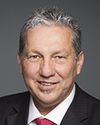Thank you, Madam Chair.
Mr. Vandal, thank you for coming back to the main topic of our study, the state of Canadian museums, by focusing on local museums.
We will have three exploratory meetings and we'll have to agree on whether we want to tackle this topic and, if so, from which angle we want to do it. Hundreds of museum representatives will want to come to tell us how difficult their situation is.
I have a very relevant question about the young Canada works program. Ms. White-Thornley, from page 17 to the end of your presentation, you mention various programs. In your view, which ones will best meet the needs of small regional museums? The young Canada works program, especially during tourist season, is certainly the most popular, but are the other programs well known? Should we talk to the various museums?
I will wrap up with a comment from the various remarks made by Internet music providers. I am the first to say that we are slow to go digital and to transition to the new technologies. For their part, museums have placed great emphasis on making their collections and works digital. In the iceberg diagram on one of the slides, we can clearly see that everything below the water must go on, even though the works have been digitized and made available on the Internet.
Does that program also meet the needs of small regional museums? We will soon hold two meetings on this topic. In your view, what challenges will those small museums be facing?






